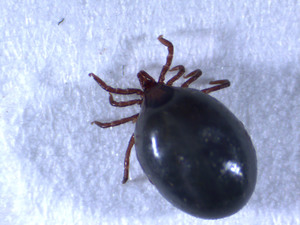Watch out for Ticks!
Ticks are small creatures that look a little like spiders and they feed on the blood of both pets and humans. There are over twenty different species of tick in the UK but the most commonly seen is the ‘sheep tick’ – or to give it its proper name, Ixodes ricinus.
Ticks have a life cycle of four stages – egg, larva, nymph and adults. Nymphs are the most likely to bite us and our pets and can stay attached for between three and five days before they drop off.
They are most commonly found in areas with longer grass. Woodlands are a favourite place, but you can see them anywhere. With Delamere Forest just around the corner, as well as plenty of countryside walks, we do see lots of ticks here. Ticks attach to your pet as they walk by; they are unable to jump or fly. Once they have attached, they suck blood and if they are carrying any disease they can pass it on in this way.
Thankfully a lot of tick-borne diseases are not found in this country but Lyme’s disease (which both humans and animals can suffer from) is found here and is spread by bites from Ixodes ricinus. It is normally seen in dogs and the classic signs include fever, lethargy and a shifting lameness, sometimes with swollen joints. Kidney problems can also develop.
It is important to remember that ticks do not always pass on disease and in most cases no ill effects are seen from tick bites. However, we recommend ongoing year-round prevention in the form of tablets or spot-on preparations (in the same way we protect against fleas). If your pet does have a tick then removal is advised. This is best done using a tick hook – a specially designed hook that ensures the mouth parts as well as the rest of the body are removed.
Just pulling ticks off with your fingers can leave the mouth parts behind which can then cause a lump which can become painful and infected. Remember to check pets regularly when you have been out for walks or they have been in the garden. Ticks are often found on the ears, muzzle and forelimbs but can be seen on any part of your pet.
If you would like further advice about the most appropriate treatment for your dog or cat, or if you think your pet has a tick and you are unsure how to remove it, please contact us at the surgery for help and advice.
